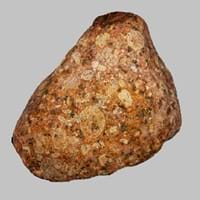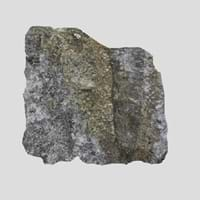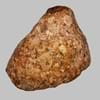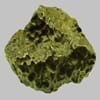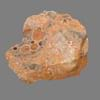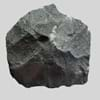Definition
Rapakivi Granite is a hornblende-biotite Granite containing large rounded crystals of orthoclase which are mantled with oligoclase
Marl is an unconsolidated sedimentary rock consisting of clay and lime
Origin
Finland, Europe
Unknown
Discoverer
Jakob Sederholm
Unknown
Etymology
From Finnish Rapakivi which stands for crumbly rock
From Old French marle, from Late Latin marglia
Class
Igneous Rocks
Sedimentary Rocks
Sub-Class
Durable Rock, Hard Rock
Durable Rock, Soft Rock
Group
Plutonic
Not Applicable
Other Categories
Coarse Grained Rock, Opaque Rock
Fine Grained Rock, Opaque Rock
Texture
Granular, Phaneritic
Earthy
Color
Black, Grey, Orange, Pink, White
Beige, Brown, Green, Grey, White
Durability
Durable
Durable
Appearance
Veined or Pebbled
Rough and Dull
Interior Uses
Bathrooms, Countertops, Decorative Aggregates, Entryways, Floor Tiles, Flooring, Homes, Hotels, Interior Decoration, Kitchens, Stair Treads
Decorative Aggregates, Floor Tiles
Exterior Uses
As Building Stone, As Facing Stone, Office Buildings, Paving Stone, Resorts
As Building Stone, Roof Tiles
Other Architectural Uses
Not Available
Curbing
Construction Industry
As Dimension Stone
Cement Manufacture, Construction Aggregate, for Road Aggregate, Making natural cement, Raw material for the manufacture of mortar
Medical Industry
Not Available
Not Available
Antiquity Uses
Artifacts, Monuments, Sculpture, Small Figurines
Artifacts, Jewellery, Sculpture, Small Figurines
Commercial Uses
Cemetery Markers, Commemorative Tablets, Creating Artwork, Curling, Laboratory bench tops, Tombstones
Creating Artwork, Soil Conditioner
Types
Igneous Protolith Granite, Sedimentary Protolith Granite, Mantle Granite, Anorogenic Granite and Hybrid Granite
Clay Marl ,Blue Marl, Red Marl, High Bank Marl, Shell Layer Marl, Under Shell Layer Marl, Sand Marl, Green Marl, Grey Marl and Clayey Marl
Features
Available in Lots of Colors and Patterns, It is One of the Oldest, Strongest and Hardest Rock
Generally rough to touch, Is one of the oldest rock, Splintery, Very fine grained rock
Archaeological Significance
Monuments
Used
Not Yet Used
Famous Monuments
Not Available
Not Applicable
Famous Sculptures
Not Available
Not Available
Pictographs
Not Used
Used
Petroglyphs
Not Used
Used
Formation
Granite is an igneous rock which is very hard, crystalline and is visibly homogeneous in texture and forms by melting of continental rocks
Marl forms when very fine-grained clay particles are deposited in water which settles at the bottom of water bodies and are compacted by overlying sediment; the water squeezes out and hence forming Marl rock.
Mineral Content
Amphibole, Biotite, Feldspar, Hornblade, Micas, Muscovite or Illite, Plagioclase, Pyroxene, Quartz
Calcite, Clay, Dolomite, Gypsum, Micas, Pyrite, Quartz
Compound Content
Aluminium Oxide, CaO, Iron(III) Oxide, FeO, Potassium Oxide, MgO, MnO, Sodium Oxide, Phosphorus Pentoxide, Silicon Dioxide, Titanium Dioxide
Aluminium Oxide, NaCl, CaO, Iron(III) Oxide, Silicon Dioxide
Types of Metamorphism
Burial Metamorphism, Cataclastic Metamorphism, Contact Metamorphism
Not Applicable
Types of Weathering
Biological Weathering, Chemical Weathering, Mechanical Weathering
Biological Weathering, Chemical Weathering
Types of Erosion
Chemical Erosion, Coastal Erosion, Water Erosion, Wind Erosion
Chemical Erosion, Coastal Erosion, Water Erosion, Wind Erosion
Grain Size
Large and Coarse Grained
Very fine-grained
Fracture
Not Available
Conchoidal
Porosity
Less Porous
Highly Porous
Luster
Dull to Grainy with Sporadic parts Pearly and Vitreous
Dull
Compressive Strength
Not Available
Cleavage
Not Available
Not Available
Toughness
Not Available
2.6
Specific Gravity
2.6-2.7
2.2-2.8
Transparency
Opaque
Opaque
Density
2.6-2.8 g/cm3
2.4-2.8 g/cm3
Specific Heat Capacity
Not Available
Resistance
Heat Resistant, Wear Resistant
Heat Resistant, Impact Resistant
Deposits in Eastern Continents
Asia
China, India, Iran, Saudi Arabia, Sri Lanka, Taiwan, Thailand, Turkey, Vietnam
India, Pakistan, Russia
Africa
Angola, Egypt, Madagascar, Namibia, Nigeria, South Africa
Ethiopia, Kenya, Morocco, South Africa
Europe
Austria, Belgium, Finland, France, Germany, Italy, Norway, Sardinia, Spain, Switzerland, The Czech Republic
Austria, France, Germany, Greece, Italy, Romania, Scotland, Spain, Switzerland
Others
Not Available
Not Available
Deposits in Western Continents
North America
Canada, USA
USA
South America
Not Available
Colombia, Ecuador, Peru
Deposits in Oceania Continent
Australia
Not Available
New South Wales, Victoria, Western Australia
Rapakivi Granite vs Marl Characteristics
Though some rocks look identical, they have certain characteristics which distinguish them from others. Characteristics of rocks include texture, appearance, color, fracture, streak, hardness etc. Rapakivi Granite vs Marl characteristics assist us to distinguish and recognize rocks. Also you can check about Properties of Rapakivi Granite and Properties of Marl. Learn more about Rapakivi Granite vs Marl in the next section. The interior uses of Rapakivi Granite include Bathrooms, Countertops, Decorative aggregates, Entryways, Floor tiles, Flooring, Homes, Hotels, Interior decoration, Kitchens and Stair treads whereas the interior uses of Marl include Decorative aggregates and Floor tiles. Due to some exceptional properties of Rapakivi Granite and Marl, they have various applications in construction industry. The uses of Rapakivi Granite in construction industry include As dimension stone and that of Marl include Cement manufacture, Construction aggregate, For road aggregate, Making natural cement, Raw material for the manufacture of mortar.
More about Rapakivi Granite and Marl
Here you can know more about Rapakivi Granite and Marl. The life cycle of a rock consists of formation of rock, composition of rock and transformation of rock. The composition of Rapakivi Granite and Marl consists of mineral content and compound content. The mineral content of Rapakivi Granite includes Amphibole, Biotite, Feldspar, Hornblade, Micas, Muscovite or Illite, Plagioclase, Pyroxene, Quartz and mineral content of Marl includes Calcite, Clay, Dolomite, Gypsum, Micas, Pyrite, Quartz. You can also check out the list of all Igneous Rocks. When we have to compare Rapakivi Granite vs Marl, the texture, color and appearance plays an important role in determining the type of rock. Rapakivi Granite is available in black, grey, orange, pink, white colors whereas, Marl is available in beige, brown, green, grey, white colors. Appearance of Rapakivi Granite is Veined or Pebbled and that of Marl is Rough and Dull. Properties of rock is another aspect for Rapakivi Granite vs Marl. The hardness of Rapakivi Granite is 6-7 and that of Marl is 2-3. The types of Rapakivi Granite are Igneous Protolith Granite, Sedimentary Protolith Granite, Mantle Granite, Anorogenic Granite and Hybrid Granite whereas types of Marl are Clay Marl ,Blue Marl, Red Marl, High Bank Marl, Shell Layer Marl, Under Shell Layer Marl, Sand Marl, Green Marl, Grey Marl and Clayey Marl. Streak of rock is the color of powder produced when it is dragged across an unweathered surface. The streak of Rapakivi Granite and Marl is white. The specific heat capacity of Rapakivi Granite is 0.79 kJ/Kg K and that of Marl is Not Available. Depending on the properties like hardness, toughness, specific heat capacity, porosity etc., rocks are resistant to heat, wear, impact, etc.Rapakivi Granite is heat resistant, wear resistant whereas Marl is heat resistant, impact resistant.
